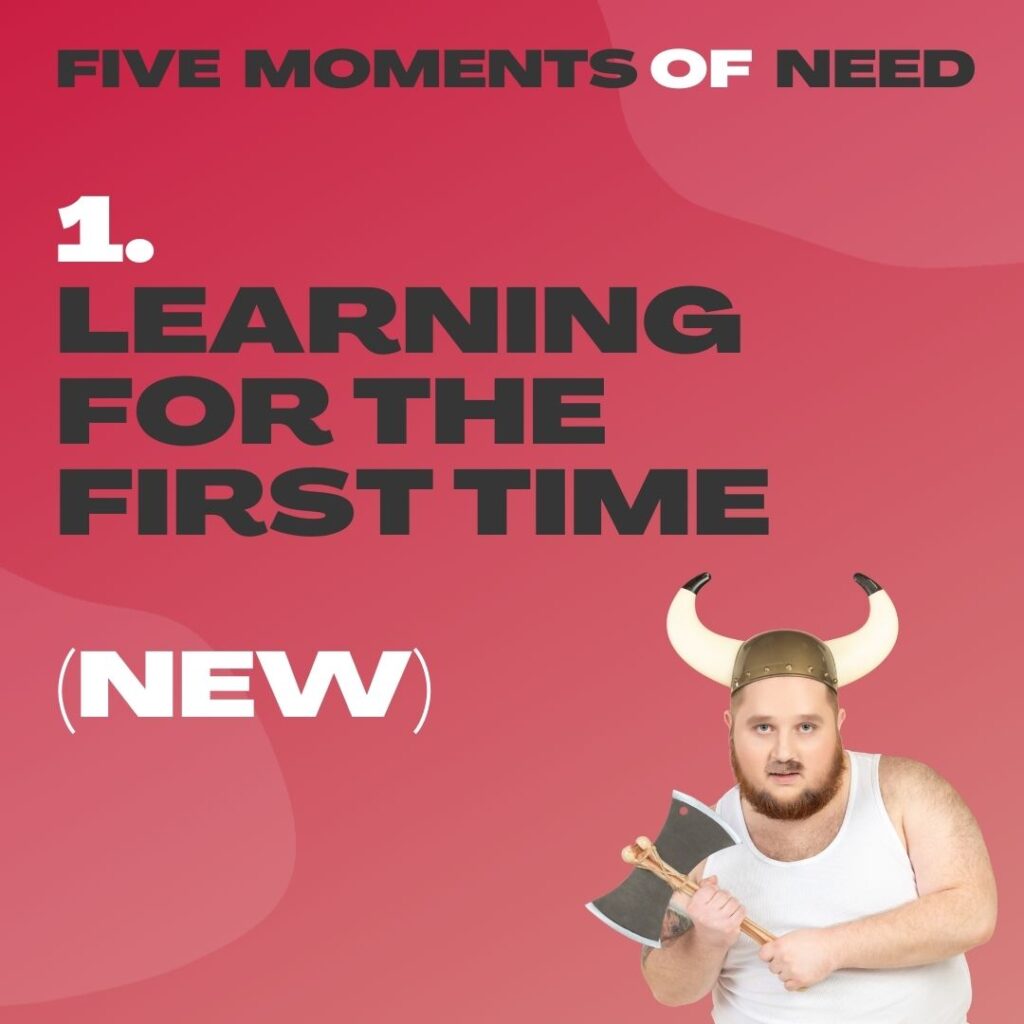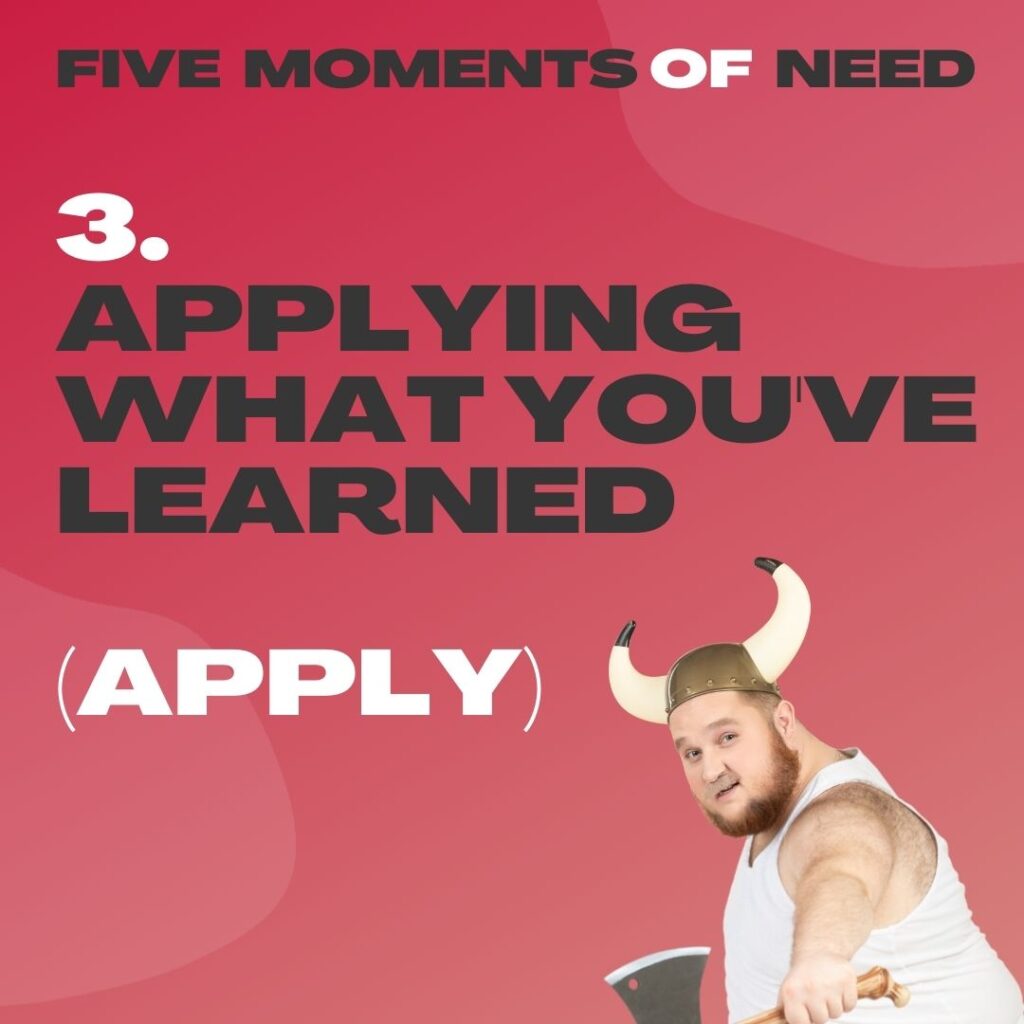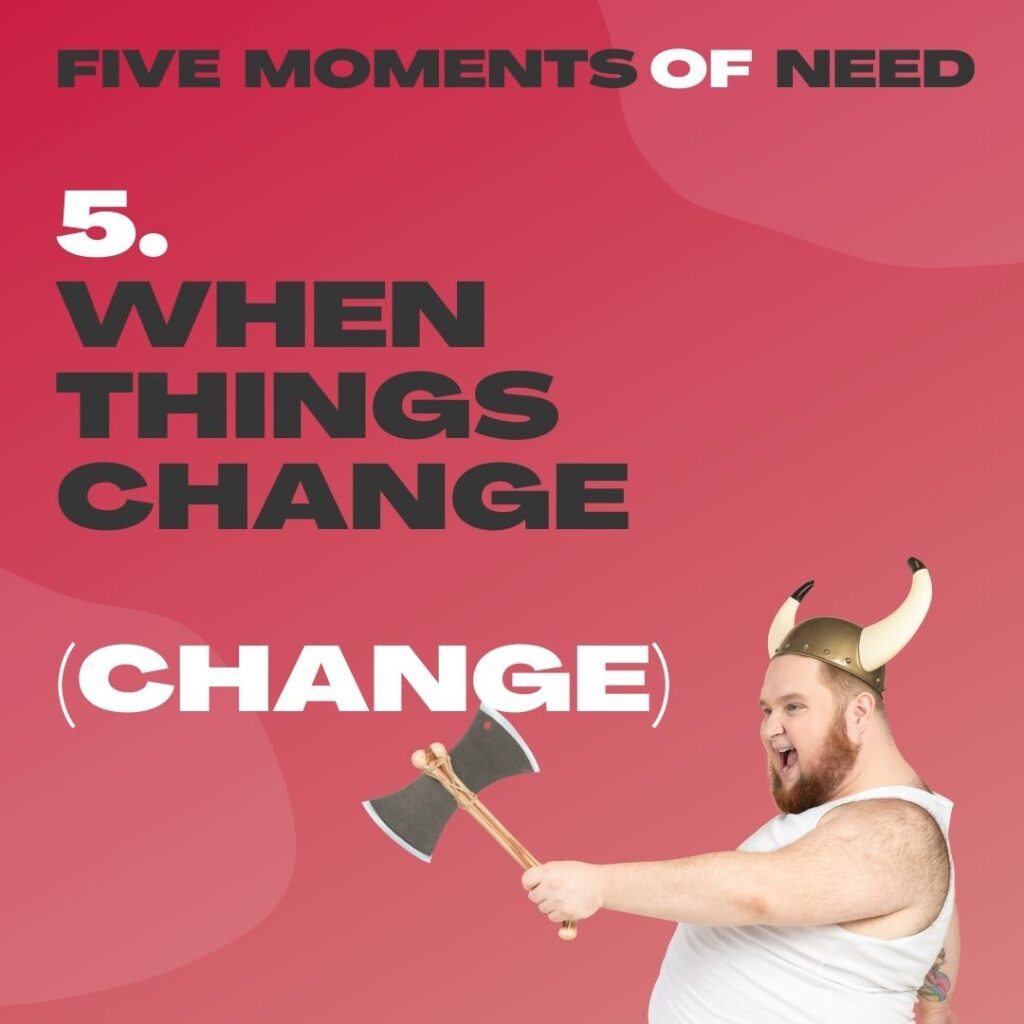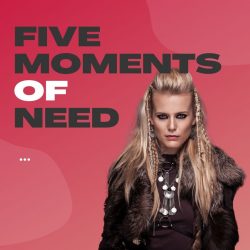The “Five Moments of Need” model was devised by Bob Mosher & Conrad Gottfredson and is widely used and applied in workplace learning. If you ever produced learning in a corporate or professional environment, you probably came across this model – it is often mentioned as a desirable model to know in instructional or learning designer job specs.
In a nutshell, the model takes into account both formal and informal learning situations. It revolves around five possible real-life situations when a person might require information to accomplish the work task.
If you ever had to learn for a new job, you know that there are different learning moment or learning requirements. You might, for example, need comprehensive training as onboarding to your job. In other cases, you might need just certain bits of information to perform assigned tasks more efficiently, or maybe in some cases, to perform a variation of the task or act it in slightly or completely changed circumstances.
What are the Five Moments of Need?
- Learning for the first time (NEW)
- Learning More (MORE)
- Applying what you’ve learned (APPLY)
- When things go wrong (SOLVE)
- When things change (CHANGE)

1. Learning for the first time (NEW) e.g. new hire training

2. Learning More (MORE) e.g. workplace ongoing training

3. Applying what you've learned (APPLY) e.g. remembering and applying knowledge and skills in real-time

4. When things go wrong (SOLVE) e.g. being able to solve unexpected problems and issues






JOIN MY NETWORK, STAY CONNECTED, GET IN TOUCH!
JOIN MY NETWORK!
RELATED POSTS
8 types of learning infographics to create engaging learning experiences
15 learning design mistakes you should avoid when creating online courses